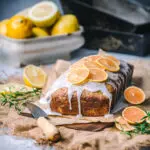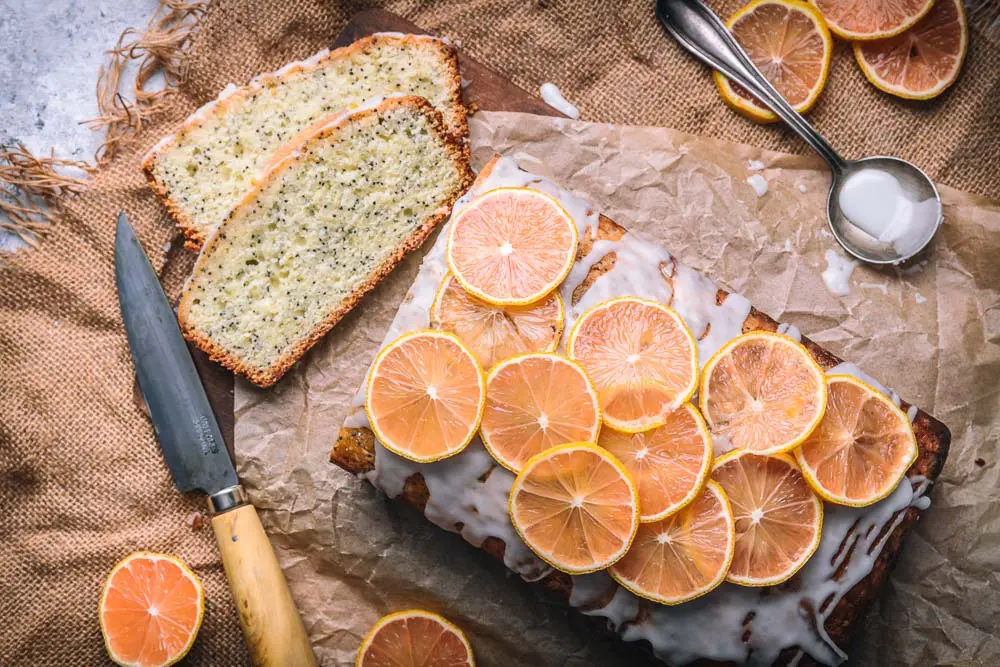
Buttermilk gives this pound cake a moist, tender crumb and with a triple hit of lemon (in the batter, syrup and glaze), our Lemon Poppyseed Buttermilk Pound Cake is perfect for citrus lovers.
One of my first jobs in the film industry was as an editing intern on the movie Surviving the Game starring Ice-T, Rutger Hauer, F. Murray Abraham and Gary Busey (is that not the most insane cast ever?). My job mostly consisted of keeping the editor and director full of coffee and anything else they needed to keep them focused during long days in the cutting room. Occasionally that would include treats from the the Little Pie Company, which was a few blocks away. It didn’t take long to realize that the one treat the whole editorial team could agree on was the Lemon Poppyseed Pound Cake. It was the ideal afternoon snack. Not too sweet, very tangy, and perfect with a cup of tea. It’s been a favorite of mine ever since and I make it every chance I get.
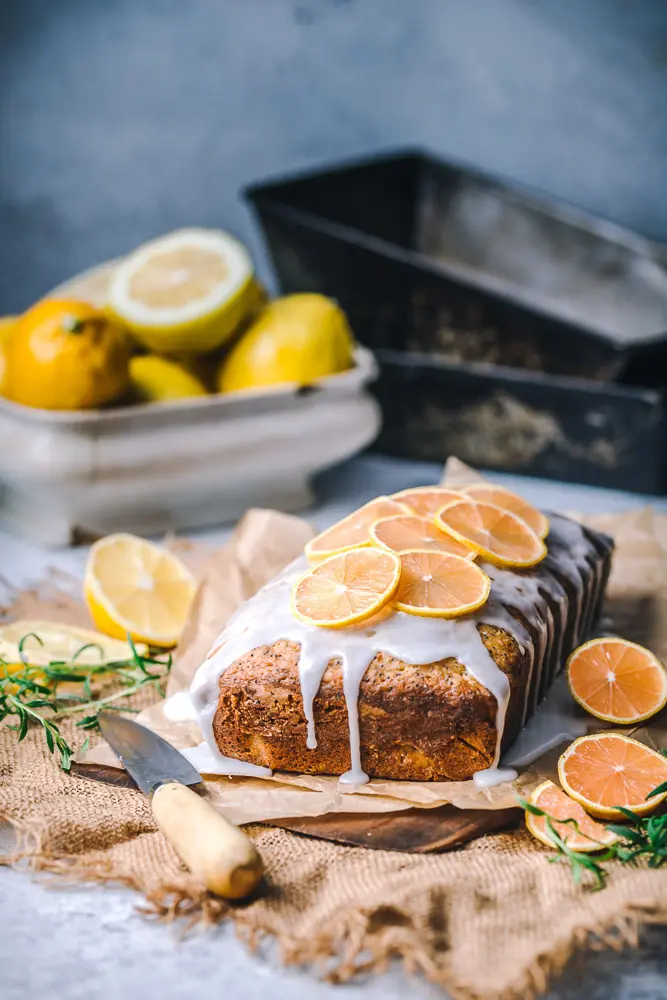
The secret to perfect texture and flavor
You don’t find a lot of pound cake recipes that use buttermilk, but it’s one of the keys to keeping this cake light and tender. Buttermilk doesn’t just add tang (which is what this cake is all about), it also helps to tenderize the gluten, giving the cake a softer texture. It also helps to activate the baking soda, which requires acidity to properly do its job of leavening.
While buttermilk in the old days used to be the liquid left in a churn after making butter, now it’s milk that has been inoculated with lactic acid bacteria, similar to yogurt and kefir. That culture is what makes buttermilk thick and rich-tasting, and gives it its signature tang. And unlike what a lot of people assume, buttermilk is actually very low in fat. Like many fermented foods (kombucha, sauerkraut and kimchi), uncooked buttermilk is a potent source of the probiotics that aid digestion and promote gut health.
The other secret weapon to ensuring the perfect texture is combining two kinds of fat. Butter for flavor, of course, but also coconut oil. We’re talking about “refined” coconut oil, which means it won’t impart a coconut flavor. So why use it? Like all oils, it’s a pure fat, but what sets coconut oil apart is its melting point. At room temperature it’s solid and creamy, which means it can be beaten to a light and fluffy texture along with the butter and sugar. But it melts well below body temperature, which means that it melts on the tongue without feeling greasy.
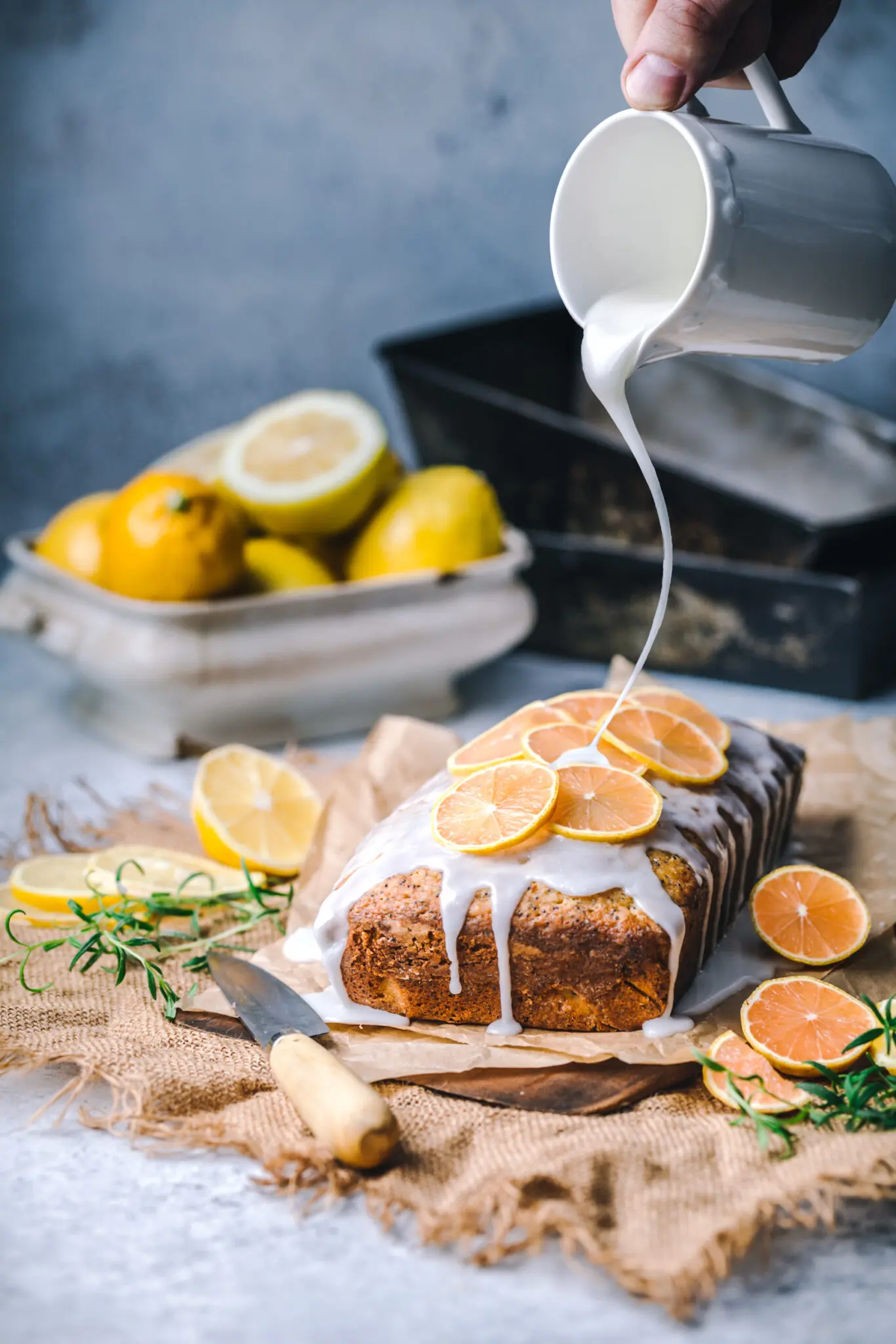
We highly recommend using a kitchen scale for baking. It’s very difficult to accurately measure many ingredients, particularly flour, by volume. While that usually won’t make a massive difference in cooking, baking requires much more precision. It doesn’t have to be a huge investment. We used this one for about 5 years and it cost about $10. When we accidentally melted it on the stove, we upgraded to this OXO version.
Note that this recipe makes enough batter for two loaf pans, or one bundt pan. The cake will keep for 3 days, covered on the countertop and freezes beautifully.
Make the Cake
Start by heating the oven to 350°F and set an oven rack in the middle position. Lightly grease your 2 loaf pans or 1 bundt pan and dust them with flour. In a medium bowl, whisk together the flour, baking soda, salt, and poppy seeds until it’s all combined. Then, in another small bowl or measuring jug, stir the buttermilk and lemon juice together. Set both bowls aside.
Next, add the (room temperature) butter, coconut oil, lemon zest and sugar into the bowl of an electric mixer fitted with the paddle attachment (or use hand beaters). Start on low power until everything’s combined, then increase the power to medium and cream until the mix turns light and fluffy, about 5 minutes, depending on the power of your mixer. Make sure to scrape down the bowl and paddle with a flexible spatula once or twice. Then, with the mixer still running on medium, add the eggs one at a time, letting each fully incorporate before adding the next one.
Next, you’re going to add the flour and the buttermilk in alternating batches, starting and ending with the flour. Reduce the speed to low and sprinkle in a quarter of the flour mixture (about 3/4 cup). Then add about 1/3 cup of the buttermilk-lemon mixture. Repeat twice more with another 3/4 cup of the flour mixture and the rest of the buttermilk, and finish with the rest of the flour mixture. Scrape down the sides and bottom of the bowl occasionally as you go, and once everything’s in, give the batter a good mix with a rubber spatula to make sure all of the ingredients are well incorporated. The batter should look thick and creamy.
Transfer half the batter into each of the prepared loaf pans (or the bundt pan) and spread it out evenly with an offset spatula or a knife. Bake until the crust is golden (or to an internal temperature of 200°F), about 55 minutes for the loaf pans (the bundt pan may take about 10 minutes longer). Cool the cake in the pan for ten minutes on a rack, then loosen with a butter knife and remove from the pans.
Make the Syrup
While the cake is cooling, make the syrup by heating the sugar and water in a small saucepan until the sugar melts. Stir in the lemon juice. Place the warm cakes onto a rack set into a rimmed baking sheet, or place parchment or foil under the rack to catch the drips from the syrup. Slowly brush or drizzle the warm syrup over the top of the warm cakes, letting it soak in as much as possible. It will seem like too much syrup but the cake will absorb it. Allow the cake to cool completely before glazing.
Make the Glaze
Make the glaze by stirring the last 2 tablespoons of lemon juice into a cup of confectioner’s sugar until no lumps remain. The glaze should run off a spoon like honey, so adjust it with more sugar or lemon juice as needed. Drizzle the glaze over the cakes, letting it run down the sides. Let the glaze. set for about 15 minutes before decorating and serving it. We topped one cake with thin slices of pink lemons and a couple of sprigs of rosemary. The other we left undecorated. Both were delicious!
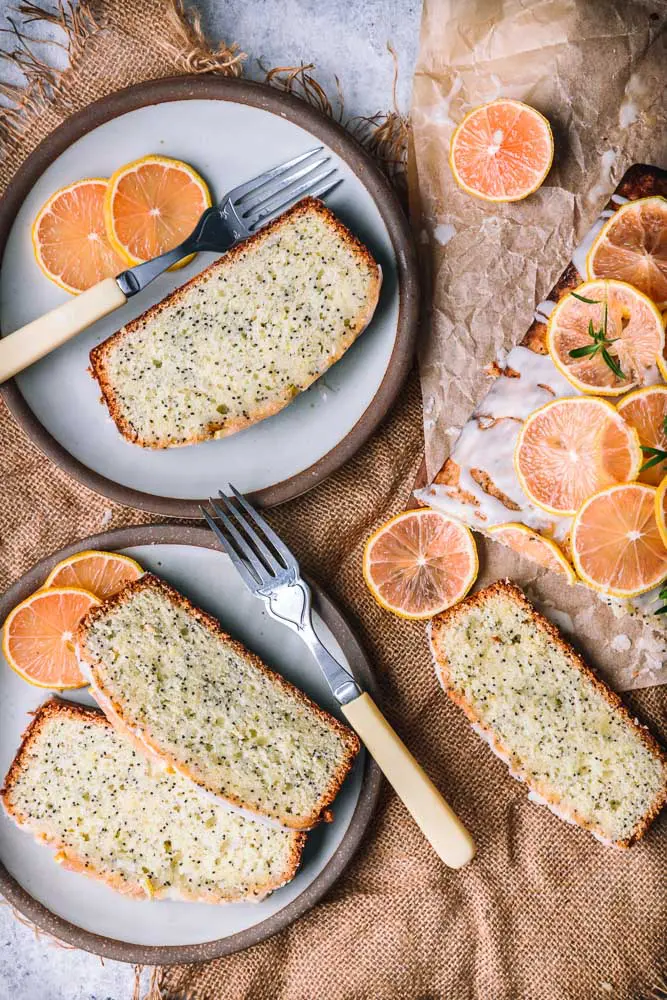
Lemon Poppyseed Buttermilk Pound Cake
Equipment
- two 1-pound loaf pans or one bundt pan
Ingredients
For the cake:
- 360 g all-purpose flour plus more for pans
- 1/2 teaspoon baking soda
- 1/2 teaspoon kosher salt
- 36 g poppy seeds
- 227 g buttermilk
- 3 tablespoons lemon juice
- 226 g butter, unsalted room temperature
- 42 g refined coconut oil
- 3 lemons, zested finely grated (about 2 tablespoons)
- 445 g sugar
- 3 large eggs room temperature
For the syrup:
- 60 ml water
- 50 g sugar
- 60 ml lemon juice
For the glaze:
- 113 g confectioner’s sugar
- 30 ml lemon juice
Instructions
- Heat the oven to 350°F and set a rack in the middle position. Lightly grease 2 loaf pans (or 1 bundt pan) and dust them with flour.
- In a medium bowl, whisk together the flour, baking soda, salt, and poppy seeds until combined. Set aside.
- In a small bowl or measuring cup, stir together the buttermilk and lemon juice. Set aside.
- In the bowl of an electric mixer fitted with the paddle attachment (or use beaters), add the butter, coconut oil, lemon zest and sugar and beat on low to combine, then increase to medium and cream until fluffy and light, about 5 minutes. Scrape the bowl and beater with a flexible spatula once or twice. With the mixer still running, add the eggs one at a time, letting each egg fully incorporate before adding the next.
- Reduce the speed to low. You’ll add the flour and the buttermilk in alternating batches. Start by sprinkling in a quarter of the flour mixture (about 3/4 cup). Then add about 1/3 cup of the buttermilk. Repeat twice more with another 3/4 cup of the flour mixture and the 1/3 cup of the buttermilk, and finish with the rest of the flour mixture. Scrape down the sides and bottom of the bowl, and give a quick mix with a flexible spatula to make sure all of the ingredients are well incorporated. The batter should look thick and creamy.
- Spoon half the batter into each of the prepared pans (or the bundt pan) and spread it out evenly with an offset spatula or a knife. Bake until the crust is golden (or to an internal temperature of 200°F), about 55 minutes for the loaf pans (add an additional 10 minutes or so for the bundt pan). Cool the cake in the pan set on a rack for ten minutes, then loosen with a butter knife and remove from the pans.
- While the cake cools, make the syrup. Combine the water and granulated sugar in a saucepan and simmer until the sugar melts, about 2 minutes. Remove from the heat and stir in the lemon juice.
- Place the warm cakes onto a rack set into a rimmed baking sheet (or place parchment or foil under the rack to catch any drips from the syrup). Slowly brush or drizzle the warm syrup over the warm cake, letting it soak in as much as possible. Allow the cake to cool completely before glazing. When the cake is cool, transfer it to a serving plate.
- To make the glaze: stir the confectioners’ sugar and lemon juice in a small bowl, mixing until completely smooth. Adjust the consistency with lemon juice or confectioner’s sugar until the glaze runs off the spoon like honey. Drizzle the glaze over the top of each cake, letting it drip down the sides. Let the glaze set for 15 minutes, then decorate with lemon slices, if desired.

